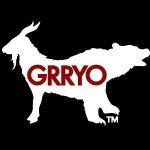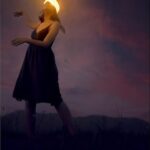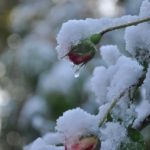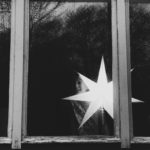 “Splash Dance” – The Art of Water Dancing by Dave Temple, “Kewiki”
“Splash Dance” – The Art of Water Dancing by Dave Temple, “Kewiki”
The first time I saw Jordy Bouchal, I knew I was on to something special. While I had seen water droplet pictures before, there was definitely something magical about his art. These were not just ordinary water droplets. Jordy’s ability to create shapes and figures from nothing more than water was astounding. I had to reach out to him and what I learned boggled my mind.
The following is an interview I had with Jordy. He was gracious enough to share with us some of his process, artwork and overall passion for what he does.
K: Kewiki J: Jordy
K: Tell me a little about yourself.
J: My name is Jordy Bouchal and I’m 30 years old. I’m from south of France in a town called Perpignan.
K: How long have you been into photography?
J: I started photography one year ago. I really love macro photography of insects, but recently became interested in water drop photography.
K: What influenced you to get into photography?
J: I was a skateboarder for more than 15 years. In skateboarding we used video a lot and I made a lot of video montages. I met a lot of great skateboard photographers and it made me want to start.
K: Tell me about your current art of water dancers. They are beautiful!
J: I discovered this are a few months ago. I saw pictures on the Internet and wanted to try it. I made my home system above my sink, but it didn’t seem to work. After a lot of trial and error, I finally invested in a machine that let me control the flow and timing of my water drops within a thousandth of a second. It allows me to synchronize the water valve, flash and camera.
K: That sounds complex!
J: It is! I originally started with milk because it has a higher viscosity than plain water. It’s easier to get a good collision. I like the look of water because it’s transparent, but plain water just doesn’t work. So to get water consistency to be the same as milk, I had to mix water with xantham gum or guar gum.
K: How are you able to get such unique and complex shapes?
J: The shapes of collisions depend on the consistency of the mixture, temperature, height between the valve and surface and the setup of the stopshot in milliseconds. For color I use food dye, ink, paint and/or flash gels.
K: What kind of camera equipment are you using to accomplish this?
J: I use two YN560II speed lights and two flashes from my Nikon R1C1 macro kit. My camera is a Nikon D5100 and my lens is a Nikon 105mm AF-S F 2.8.
K: Wow! This is a real science then! Thank you again for sharing with us and inspiring us with your incredible work.
J: You’re very welcome!
Below are examples of Jordy’s setup and works of art.

Jordy’s Setup

Azur Rain
 Carousel
Carousel

Jellyfish

The Mexican
If you’re interested in seeing more of Jordy’s work, please check him out on Instagram or you can contact him if you’re interested in learning more about his work. Thanks again to Jordy for sharing with us!
Editor’s Note: The above images are not captured with a mobile camera.
About Author

Latest stories
 CommunityDecember 31, 2020We Bid Adieu
CommunityDecember 31, 2020We Bid Adieu Alexandra PrestonDecember 31, 2018December Wishes from Grryo
Alexandra PrestonDecember 31, 2018December Wishes from Grryo StoriesMarch 11, 2018The Marigoldroadblog Project by Adjoa Wiredu
StoriesMarch 11, 2018The Marigoldroadblog Project by Adjoa Wiredu Antonia BaedtDecember 22, 2017‘Tis a Jolly Grryo Christmas
Antonia BaedtDecember 22, 2017‘Tis a Jolly Grryo Christmas

Lovely images for sure, but how does this article fit in the WeAreJuxt philosophy of mobile photography?